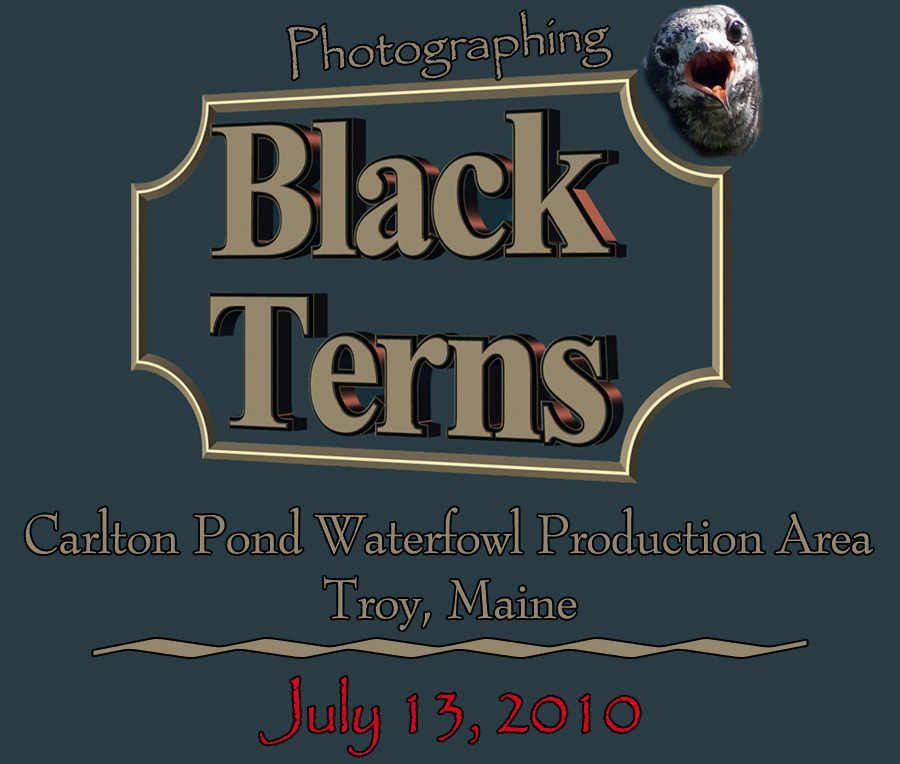
|

|

|
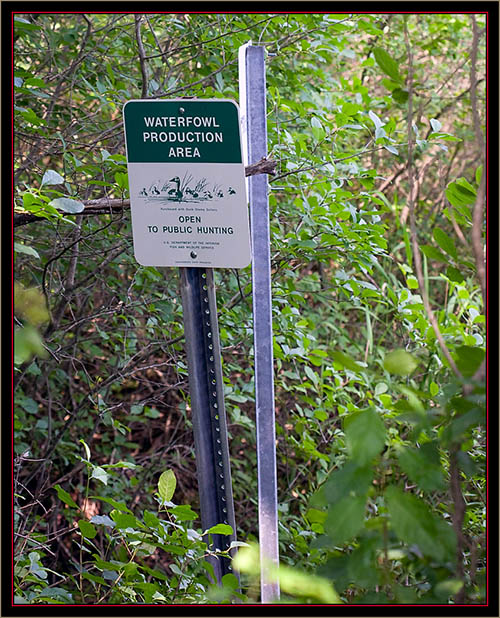
|
I became aware of a pond in Troy, Maine, about two hours from my home, known to have a population of Black Terns in summer. Upon further investigation I learned this location, Carlton Pond Waterfowl Production Area, was under the auspices of the U.S. Fish & Wildlife Service and was administrated out of their Rockport offices. I’d been out my with cameras with some USFWS staff recently, Photographing Seabirds, so I emailed the Refuge Manager, Beth Goettel, and made an inquiry to learn if they had anybody going out to the area, or if it was okay if I went on my own. Checking the pond and bog area on-line it appeared one would need a boat or canoe for this trip. In the end result this was exactly what was required. There wouldn't be much chance of success to obtain tern images at this site without getting on the water. |
|
You know how you think about things you’d like to do and plan to get around to them eventually? Days, weeks, months go by and you never find the time for various reasons – I didn’t
follow up on Black Tern sightings last year with work and other of life’s obligations. Well – this wasn’t the case now… Within several hours of emailing Beth my mobile
phone rang. It was Steve Agius out of the Milbridge office. By coincidence, he was going to Carlton Pond with a canoe the next day. I could join him if I was able to
take the time. Talk about short notice; often this is how things work with FWS schedules I’ve found – I told Steve I’d meet him – tell me when and where…
Afterwards I emailed Mao Ling in the Falmouth office to inform him of the plan as a courtesy. Mao is a FWS biologist and we’ve gotten together on several occasions. Also our offices are fairly close compared to most FWS facilities – Portland and Falmouth, so we can meet for lunch occasionally when our schedules permit. Besides being interested in what he does for work I enjoy spending time with Mao, he’s a good man and I have no doubt he is a significant asset to the service. Late in the day I received an email from him inquiring if I could bring one of his summer interns along, Clare Franco. He was trying to line up some field experience for her. I called Clare and the next day we met in Brunswick on the way up the coast. Clare Franco and Steve Agius at Carlton PondCanon EOS Mark III 1Ds, 1/640 second at 70mm; EF 70~200mm f/2.8L at f/9, ISO 400 |
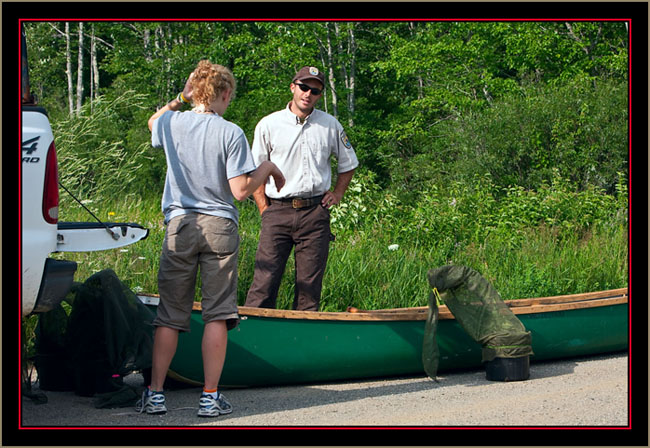
|
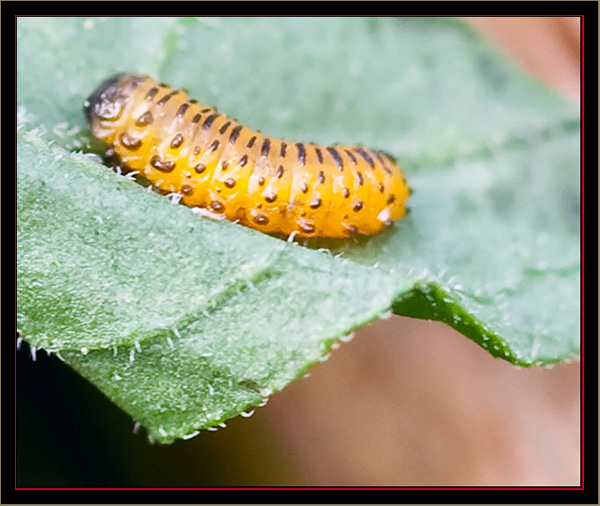
|
Steve was going to be working on the pond doing a bio-control beetle release. A beetle release? 'What’s that all about', I asked… What I learned was FWS actually raised
beetles (Galecucella calmariensis) to combat the invasive plant, Purple loosestrife (Lythrum salicaria), aka, the 'Purple Plague'. In the coming days Steve would be checking the pond for Purple loosestife
and would release a Galecucella beetle population to inhibit the spread and hopefully destroy the problematic weed.
Introduced from Europe, this perennial herbaceous plant has spread to all but three counties in Maine. It destroys wildlife habitat and food sources for native fish and wildlife, growing in dense stands crowding out native
plant species. Purple loosestrife infects nearly 400,000 acres a year in the United States and it is estimated about 45 million dollars annually is expended on control efforts and to combat crop losses attributed to this
menace. If you’d like to learn more please visit your local refuge to obtain information about the plant, how to identify it and how to prevent its spread.
I indicated that I’d be interested in photographing Steve's efforts as
well as the bio-control beetles for the refuge archives. And I did this… What I didn’t realize at the time was Galecucella Beetles grow to the length of 4 to 6 millimeters as
adults - .157 to .236 inches – these critters are tiny…
Galecucella Beetle Larva... Canon EOS Mark III 1Ds on tripod, 1/160 second at 100mm; EF 100mm f/2.8 Macro at f/5, ISO 400 with Flash |
I was surprised to see Steve’s truck was freighted with beetle laden plants; I think he said he had ninety or more on board for visits to various ponds they manage. This
appeared to be a good deal of work for one person to get into the field and distribute. He was there for the bio-control beetle release, having me around to photograph terns
probably wasn’t all that helpful to his schedule. I’d met Steve several times in the Milbridge office and on Petit Manan Island previously. When I learned it was he I’d be
meeting I was doubly pleased. I already had a tripod set up and was photographing the pond grounds when Steve arrived. While he made preparations, Clare and I pulled some of
the plants out to photograph the beetles with a macro lens. This wasn’t as easy I’d hoped for critical focus. The wind was up enough to create problems - any wind is too much
with the short distances involved doing macro work, and of course the beetles
were going about their business and weren’t exactly staying still. We conducted two beetle photography sessions, both before and after going out in the canoe seeking Black Terns. Clare was especially helpful
with this effort as she pointed out the tiny subjects and assisted with keeping them in the shoot zone while I followed them through the lens or employed live view to focus. In
the following templates I’ll
combine images from these sessions to provide a good idea of what these tiny critters look like.
A Bio-control Beetle Up Close and PersonalCanon EOS Mark III 1Ds, 1/640 second at 70mm; EF 70~200mm f/2.8L at f/9, ISO 400 |
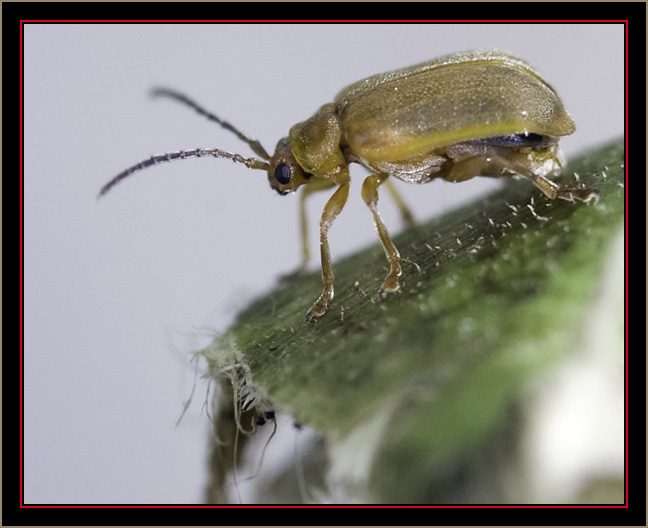
|
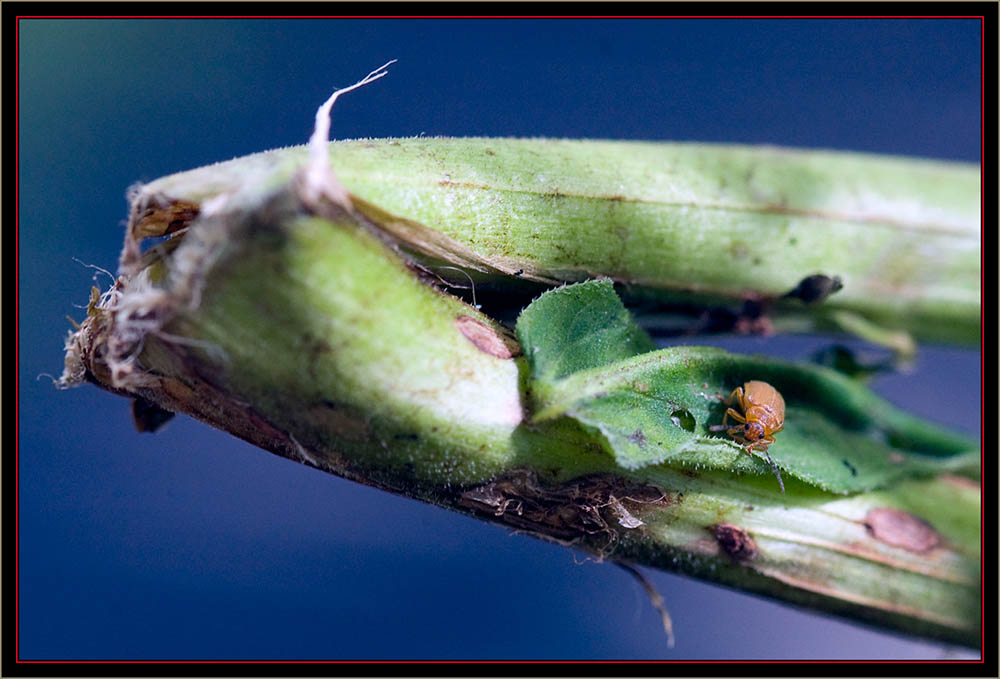
|
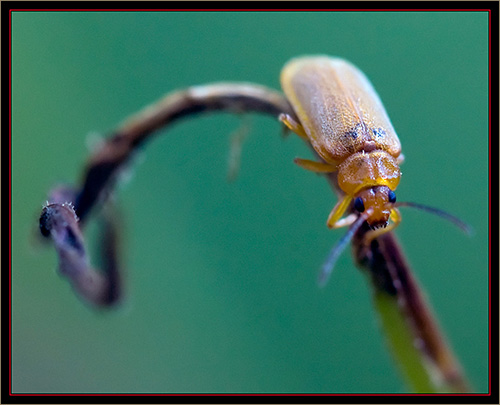
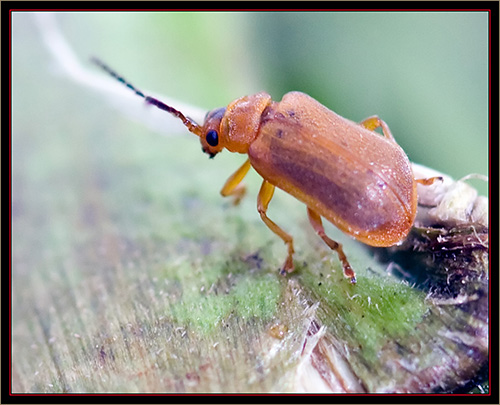
|
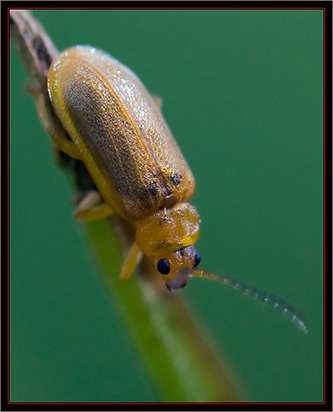
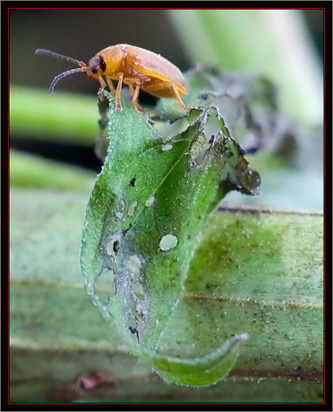
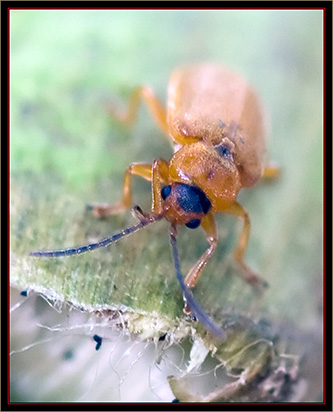
|
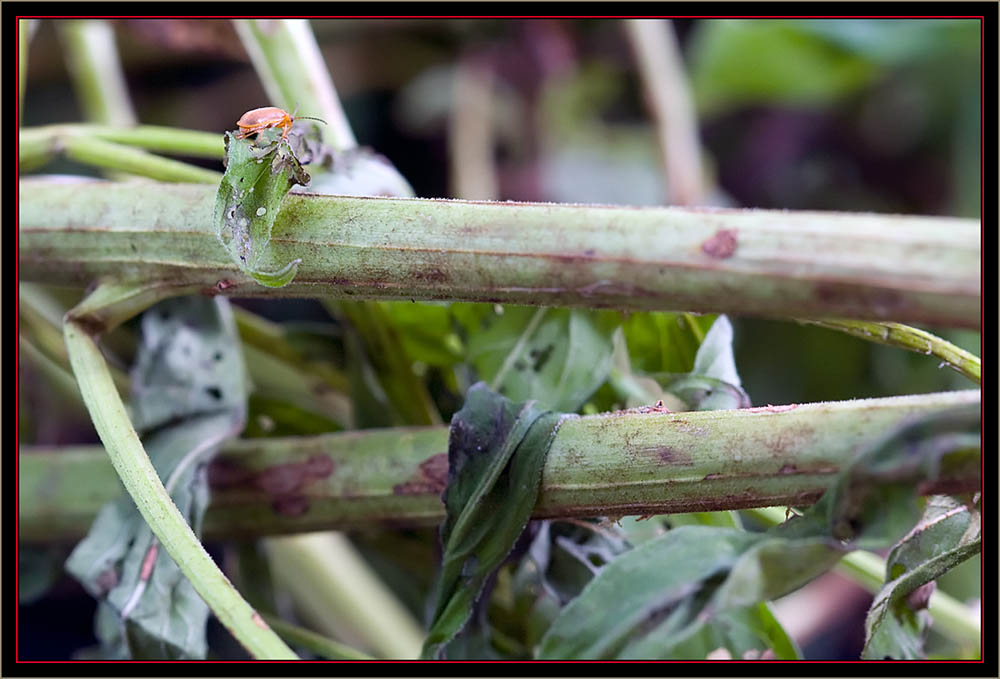
|
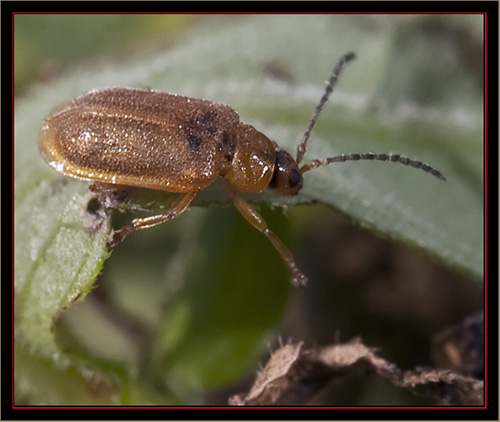
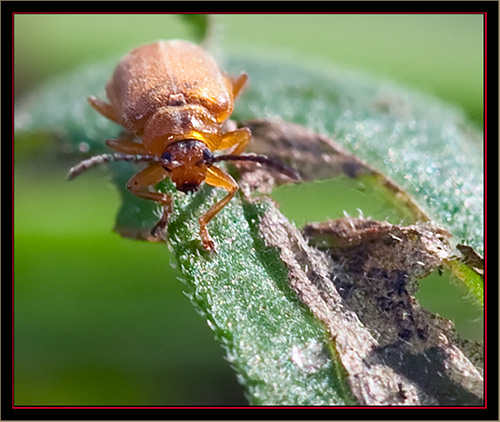
|
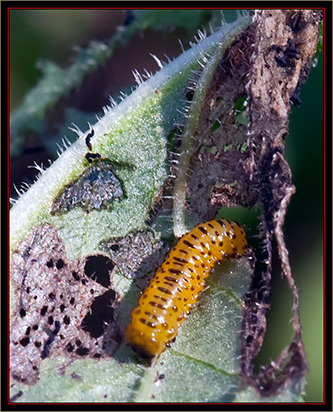
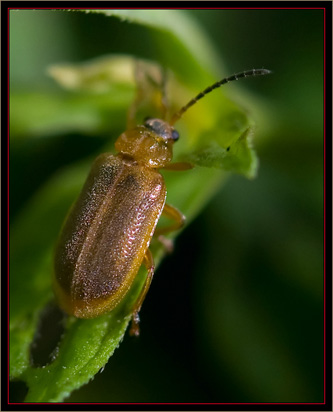
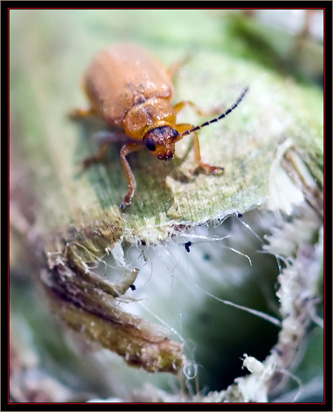
|
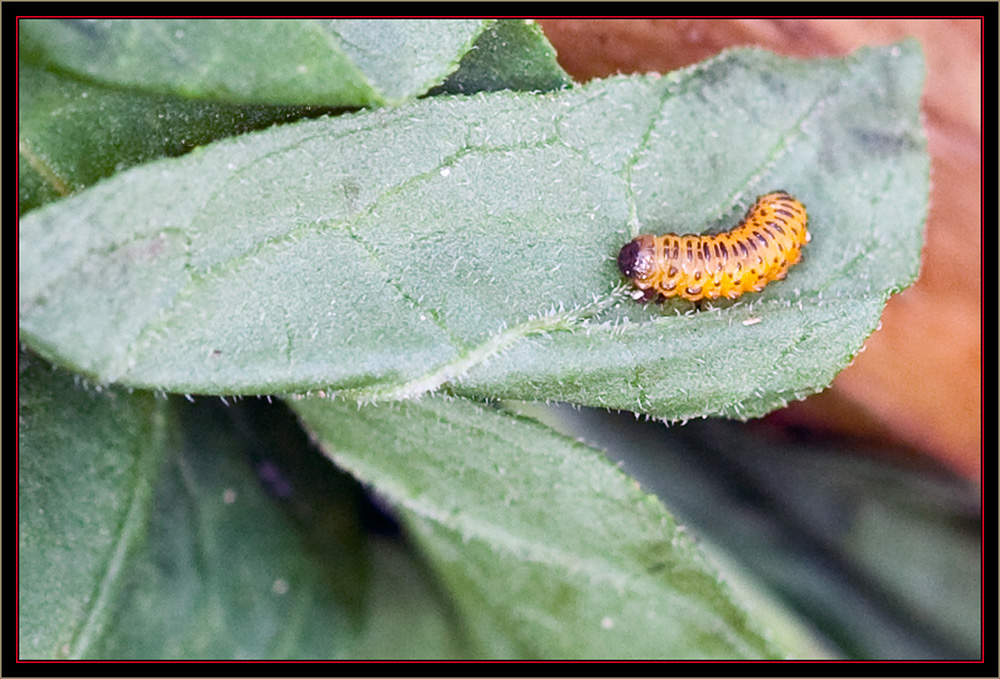
|
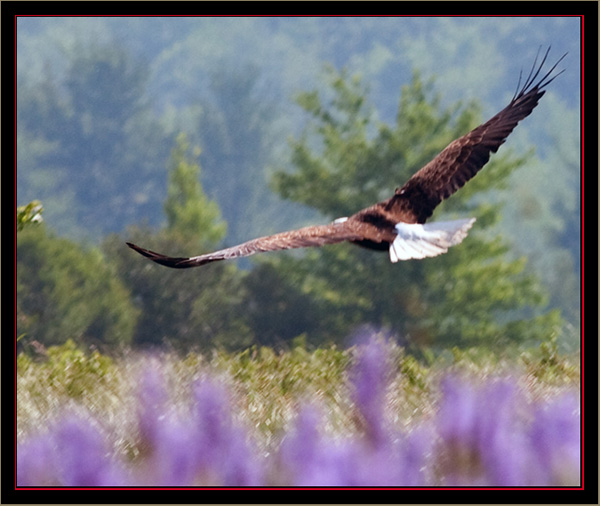
|
Because there would be three of us in the canoe Steve didn’t plan to transport plants initially. We’d go out, check for terns and reconnoiter for
Purple loosestrife on the way. We placed what we required in the canoe and stepped in. I carried two cameras and some accessories in a dry bag
also planning for some short focal length scenic images from the water. Clare was forward, Steve in the stern, both would be paddling. I was in the center sitting
on the bottom with my legs stretched out in front. Steve indicated this would be better than sitting on the strut and I learned he was correct. It was a
more stable position for panning with a lens, although restricted movement and thusly inhibited the potential shoot zone. Photography from a canoe or kayak
is not my favorite method but at times it is necessary. Today was one of those times…
Bald Eagle Over Carlton Bog Canon EOS Mark III 1Ds, 1/640 second at 400mm; EF 400mm f/5.6L at f/9, ISO 640 |
|
Steve was familiar with the pond and indicated he knew where the terns would be found if this year was similar to others. This reinforced the fact getting on
the water was important at this site because most of the activity appeared to be in the back section of the pond farthest from the road. We intended to develop
a count to judge the success of the colony. We found later this was difficult once the birds started flying about. The good news was Steve indicated this
was the most Black Tern activity he recalled observing at this site in several years. The colony appeared to be doing well.
As we started observing Black Terns flying low around pond’s edge foraging, I knew this was going to be a fine morning. It was getting warm, the sun was climbing and the light was harsh. Nothing could be done about the conditions but I figured this was okay and would serve for faster shutter speeds. Black Tern in Flight - Beautiful and Graceful...Canon EOS Mark III 1Ds, 1/640 second at 400mm; EF 400mm f/5.6L at f/9, ISO 640 |
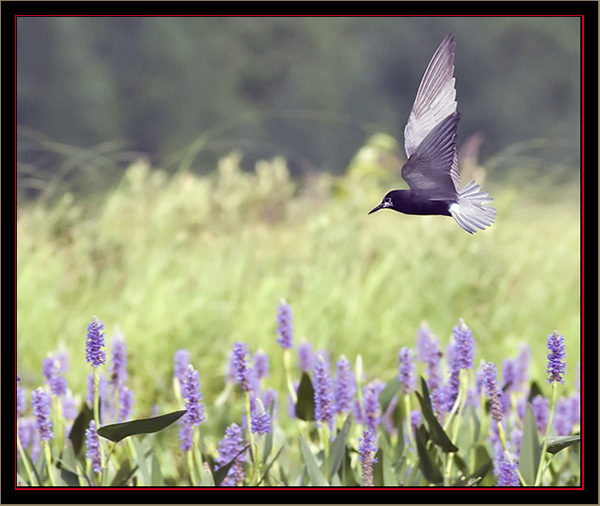
|
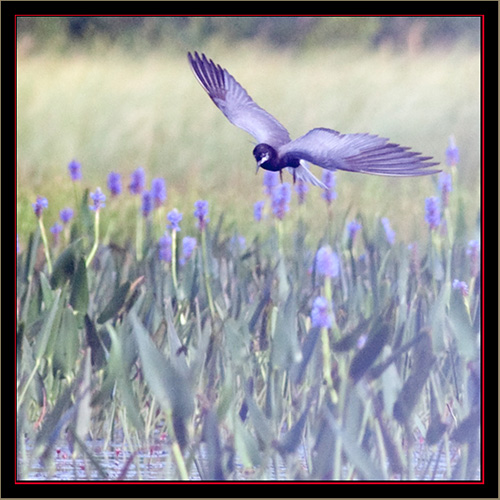

|
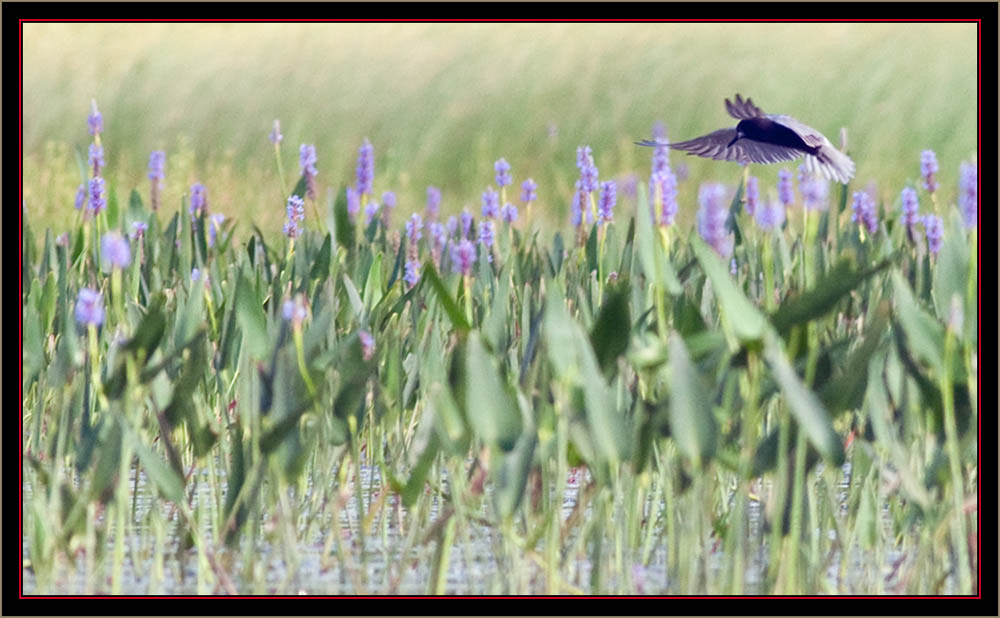
|
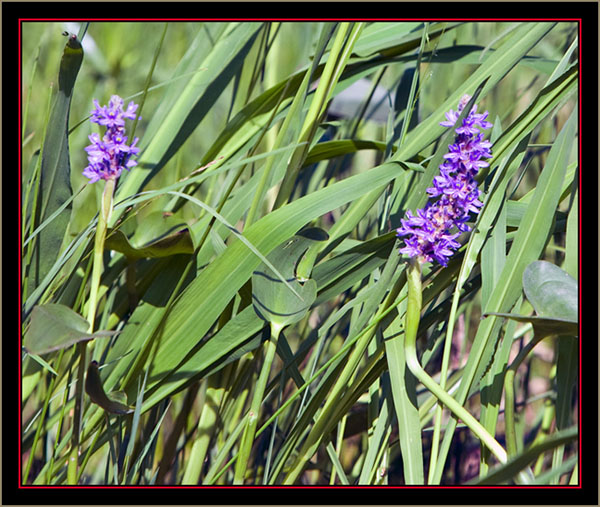
|
Steve and Clare paddled along moving towards the back of the pond as we observed the activity and talked. We viewed a good deal of bird activity around
us – a Bald Eagle at distance, an Eastern Kingbird,
Red-winged Blackbirds and some ducks flying on the horizon. I continually took exposures as we scudded
along the pond. I liked the perspective through the lens, low to the water - an interesting angle compared to shooting down from a standing position. We
could see terns flying along the water’s edge. Often I’d change cameras to photograph these as Clare and Steve served as spotters to alert me if anything
was coming our way. Focusing on a dark bird moving in the foreground was problematic with the tree line behind, which confused the autofocus.
Along Water's Edge - Carlton Pond Waterfowl Production Area Canon EOS 5d, 1/800 second at 185mm; EF 70~200mm f/2.8L at f/5.6, ISO 400 |
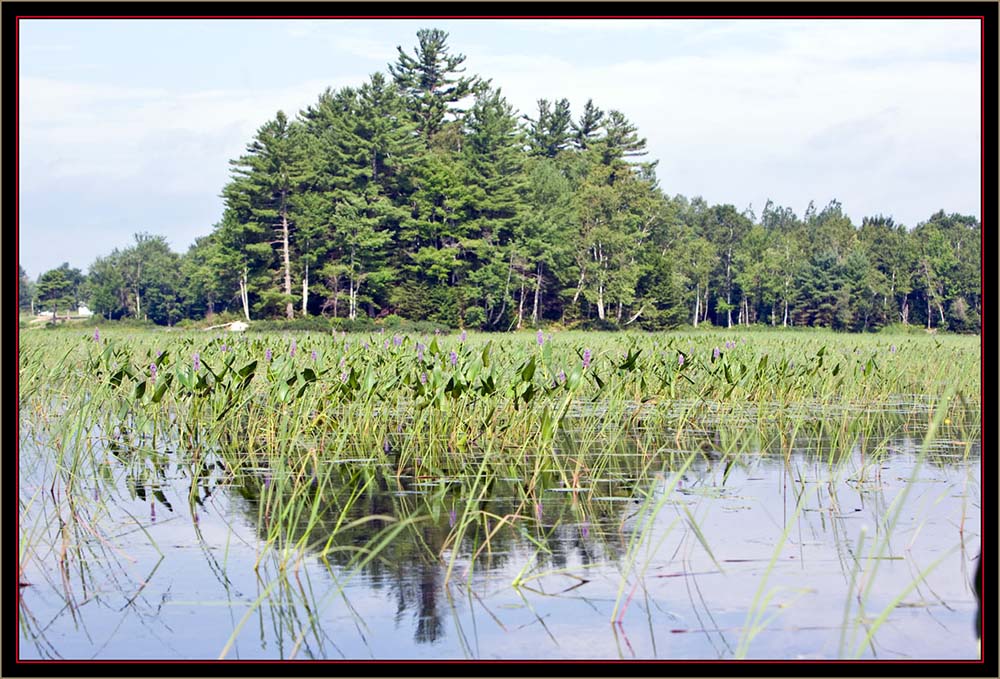
|
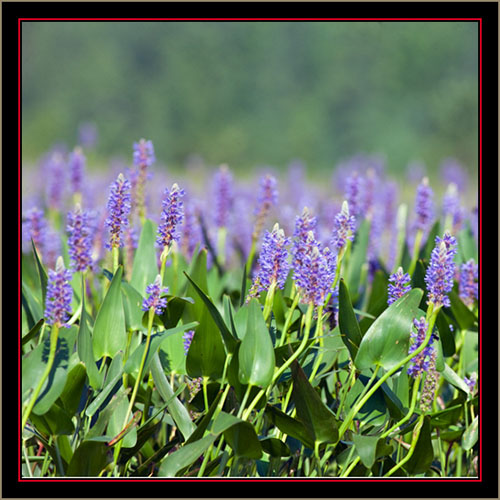
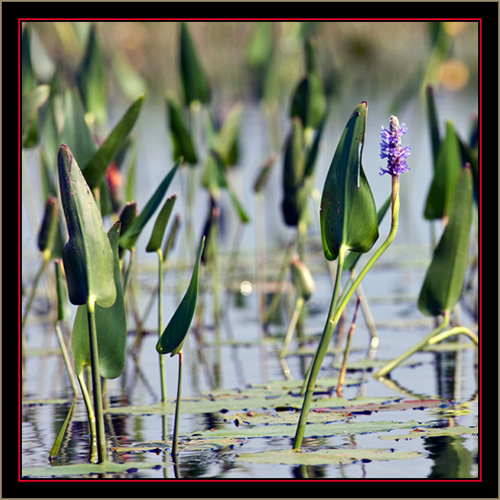
|


|
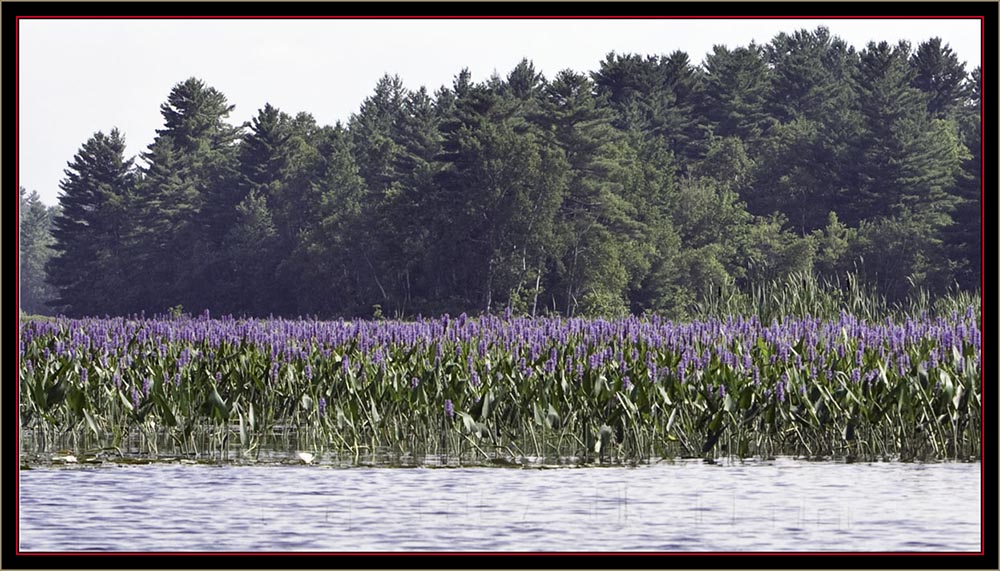
|

|
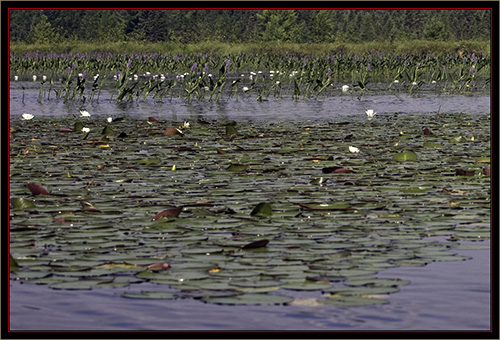
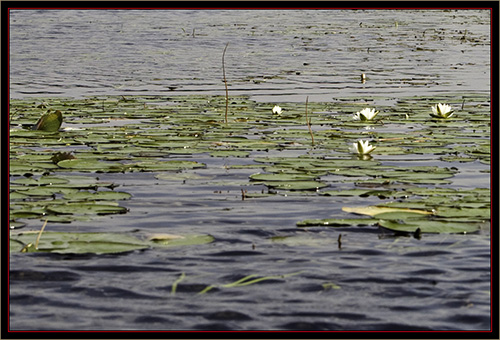
|
Steve took us over to the area of greatest Black Tern activity. Along the way he pointed out the remains of a blind and we observed terns perched on the
weathered boards. We couldn’t close the distance much – the pond was shallow near the bank. Steve said the muck was deeper than the water - stepping out
of the canoe was ill advised. We hoped to find and photograph a nest, perhaps one with eggs, for the refuge archive. The birds were nesting in shallow water
and as we moved in our presence was causing more agitation then we felt was warranted. We went to deeper water and I started photographing flying terns…
Black Tern on Blind Remains...Canon EOS Mark III 1Ds, 1/640 second at 400mm; EF 400mm f/5.6L at f/9, ISO 640 |
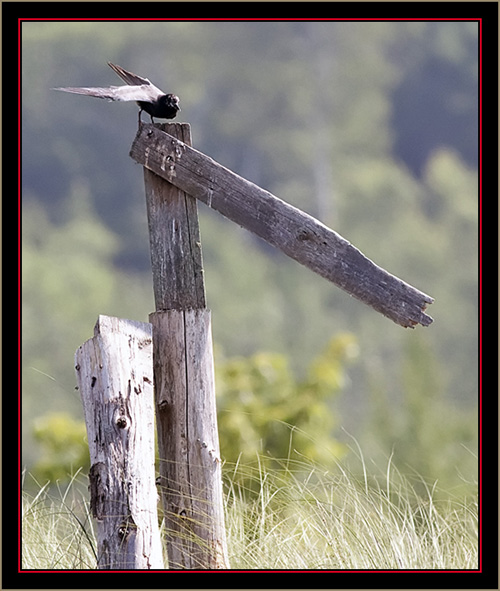
|

|
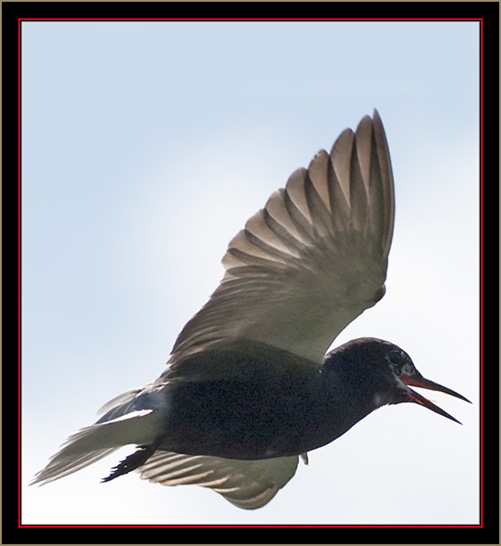
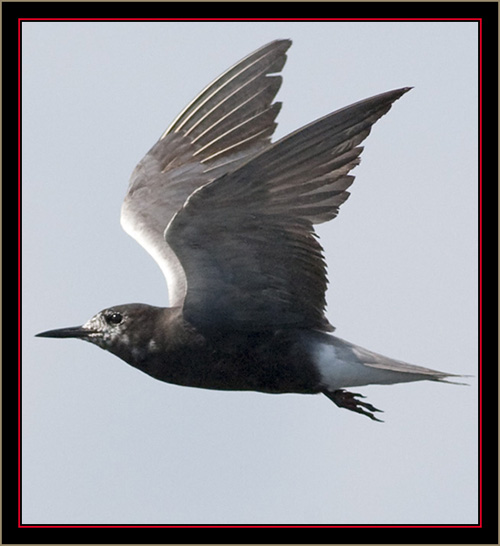
|
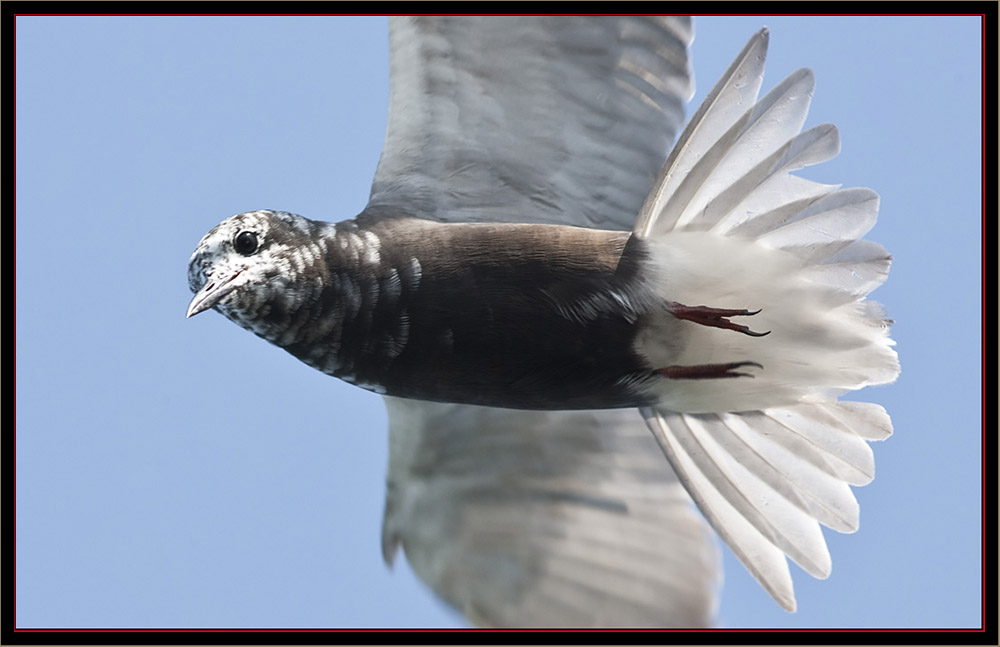
|
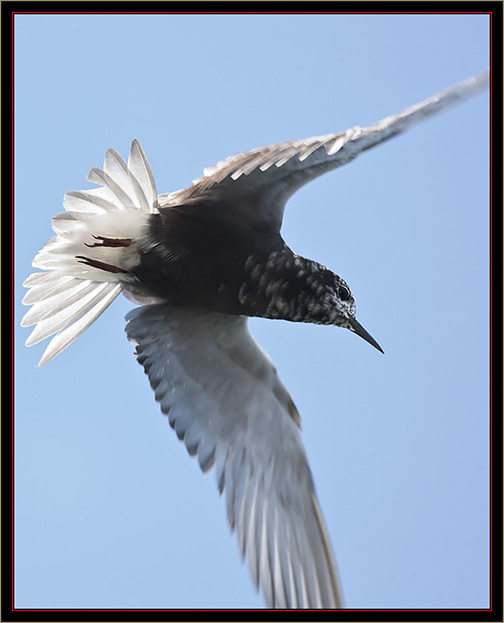
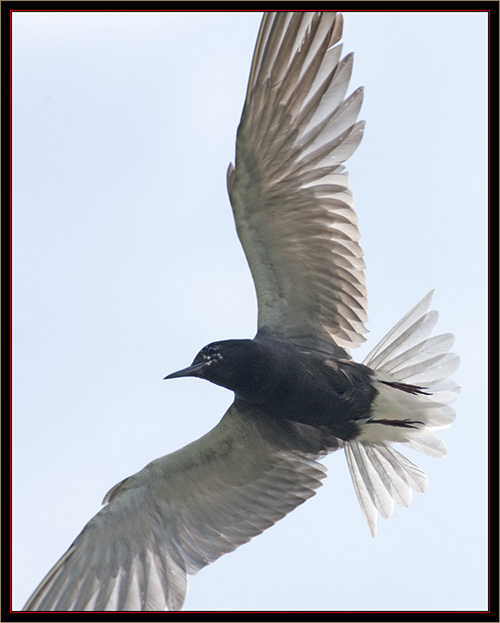
|
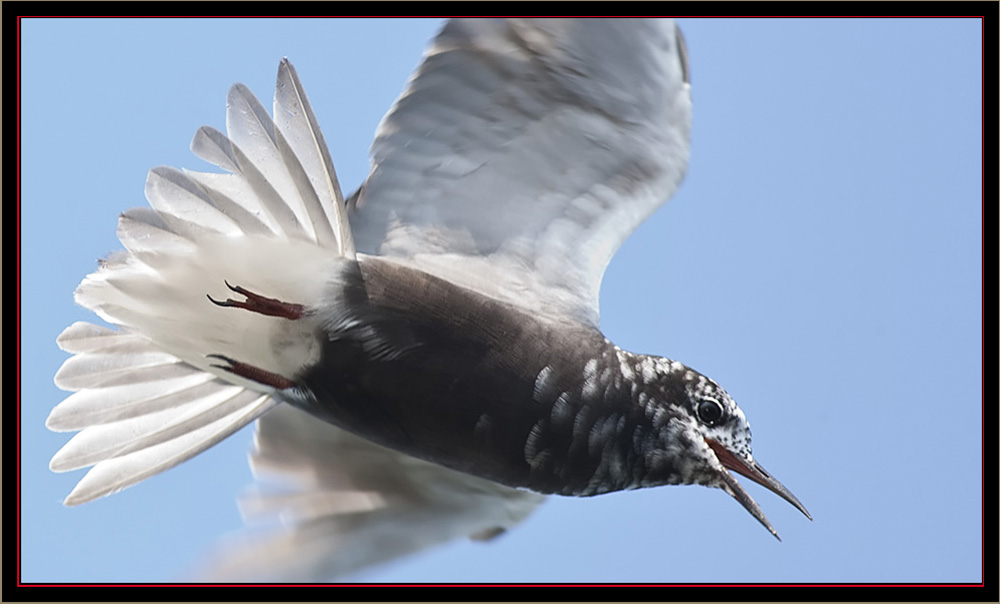
|
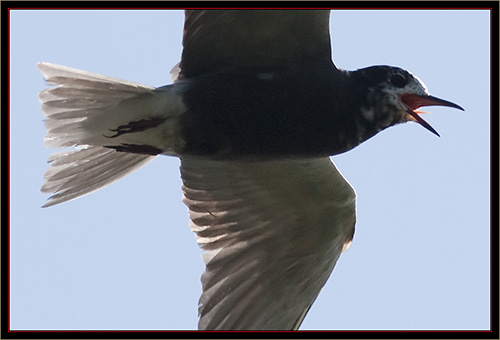
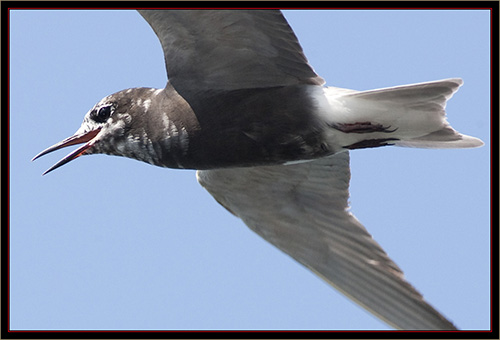
|
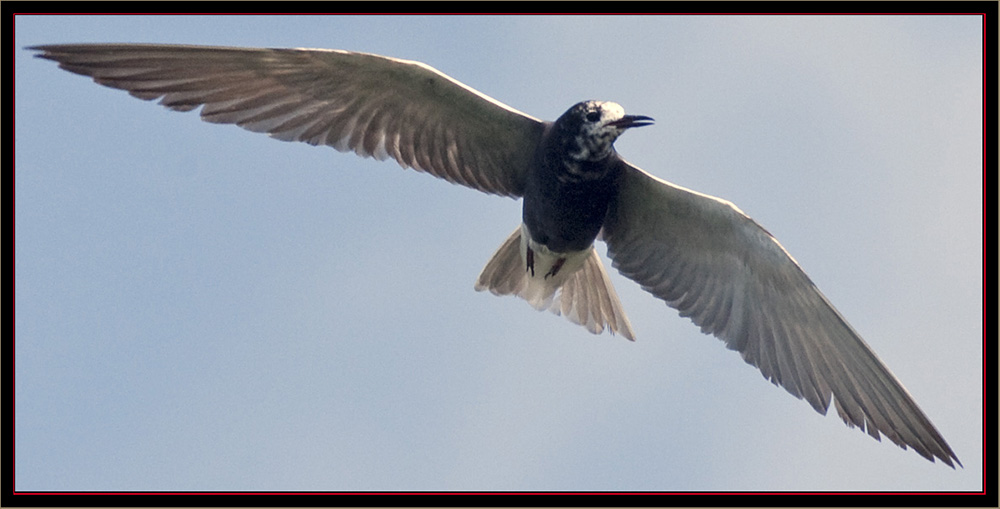
|
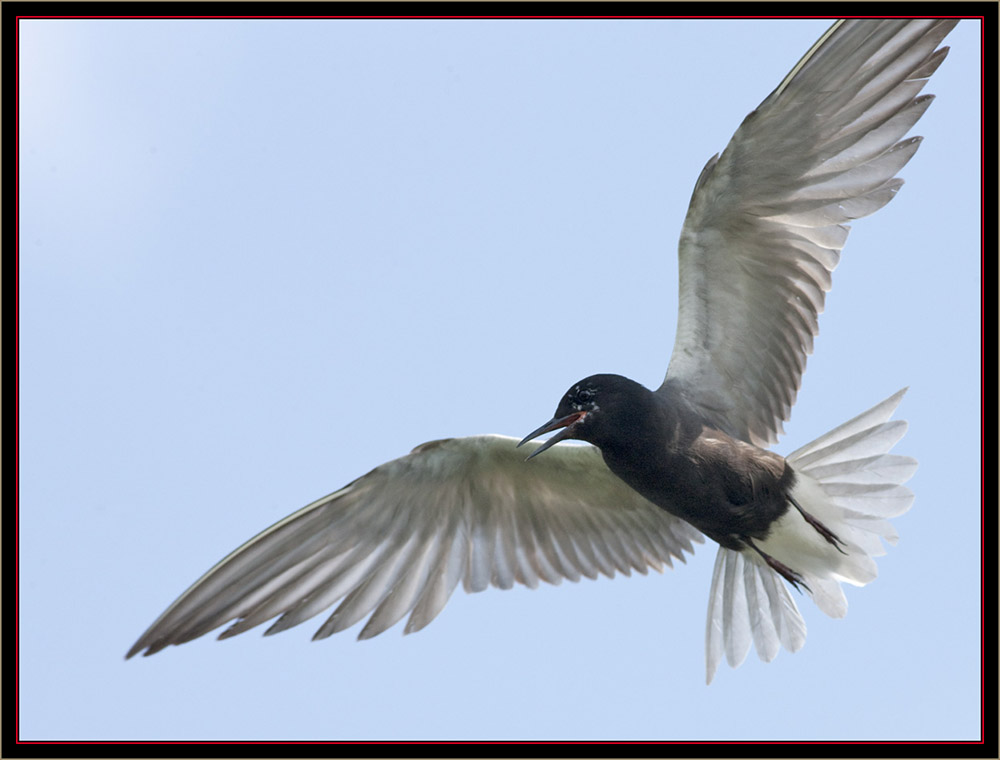
|
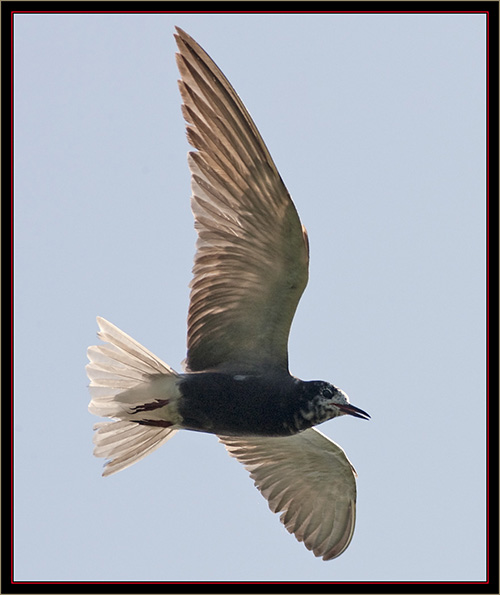

|
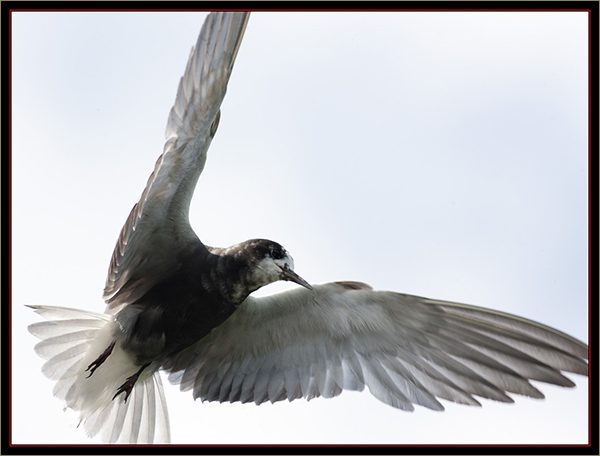
|
Positioned as I was in the canoe, panning with a 400 millimeter lens proved challenging as the terns flew in from all directions at varying altitudes. It wasn’t easy
to track a particular individual long enough to achieve a good focus lock and the terns were flying in a most erratic fashion. Photographing these terns had positive and
negative aspects – good because they didn’t try to peck you or attack on the way by like Common Terns
or Arctic Terns, not so good in that they didn’t hover
often and remained fairly mobile. It was indeed challenging but also a great deal of fun. I think many of the best shots were taken over my shoulder as I
twisted around, attempting to retain a focus lock on a bird. I laughed when evaluating the images later on my monitor – I had multiple out of focus shots of
the back of Clare’s head as I panned.
Black Tern - Carlton Pond Waterfowl Production Area Canon EOS Mark III 1Ds, 1/1250 second at 400mm; EF 400mm f/5.6L at f/8, ISO 640 |
I considered changing cameras and moving to a shorter focal length lens. I had a 70~200 zoom on the 5d body, which would have done much to insure the entire bird was in
the frame. But I’m more in tune to imaging at 840 millimeters and wanted the larger image scale the 400mm lens would provide for detail. Trying to photograph anything in
the air on the sun side of the canoe was especially problematic. I didn’t use flash in this case; most of the images I did manage to obtain from this side exhibited noise
introduced from the strongly backlit scene. The peak of the photography effort wasn't of long duration whatsoever. Being the conscientious individual that he is, Steve was concerned
about stressing the birds. We couldn’t have been too close to their nests from what I could tell - we were in more or less open water. After several hundred
exposures of terns on the wing we moved off. It was an outstanding experience although I recall not having a great comfort level with what may come out of the effort…
Black Tern - Carlton Pond Waterfowl Production AreaCanon EOS Mark III 1Ds, 1/1000 second at 400mm; EF 400mm f/5.6L at f/8, ISO 640 |
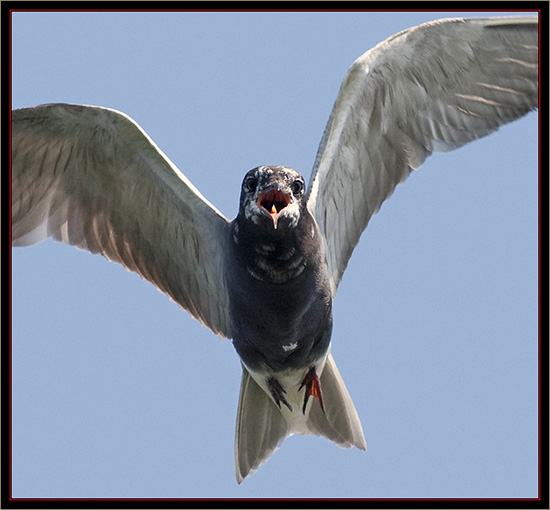
|
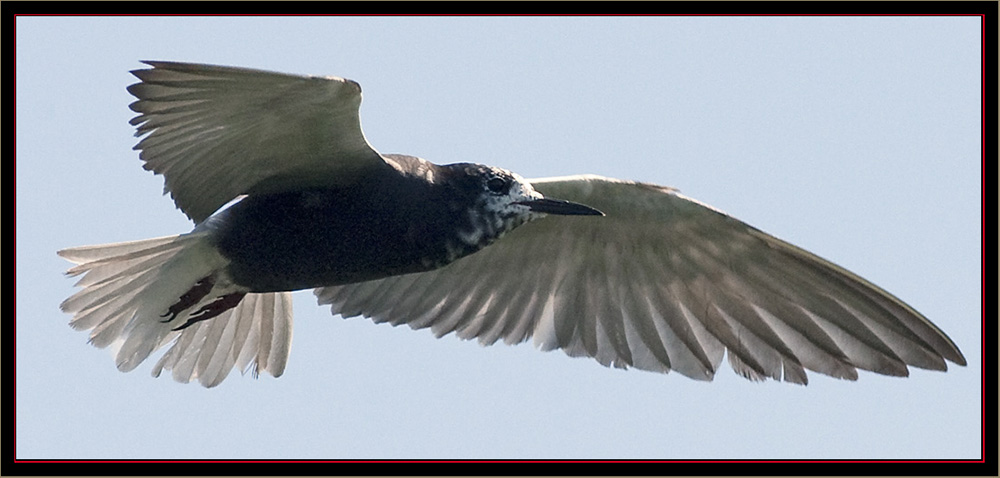
|
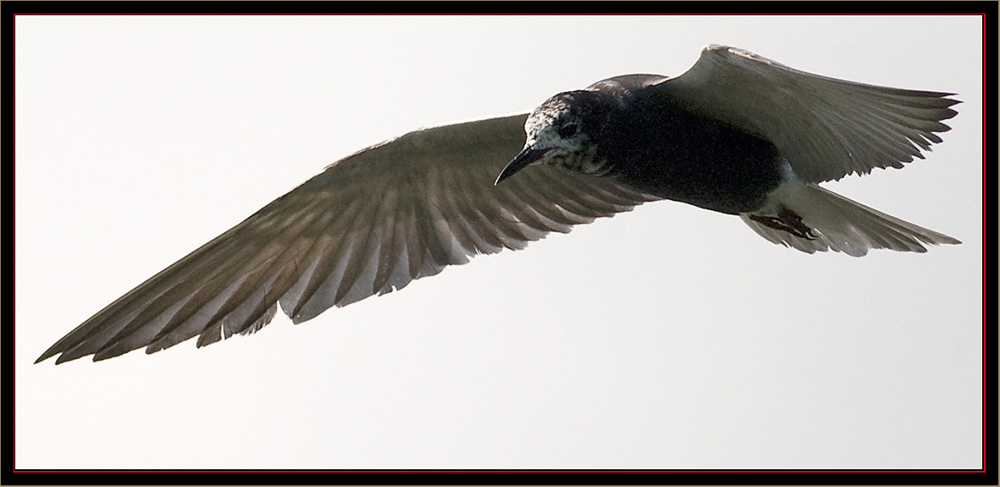
|
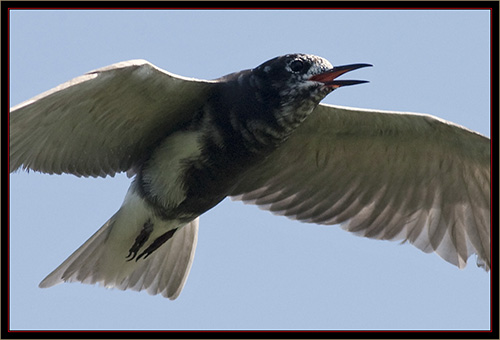
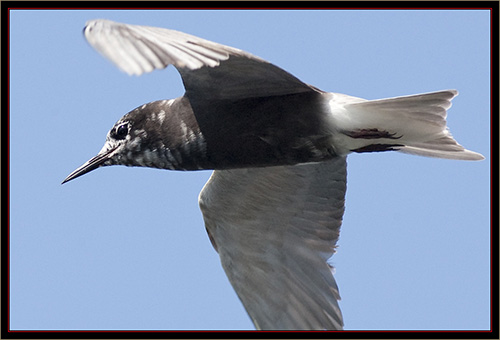
|
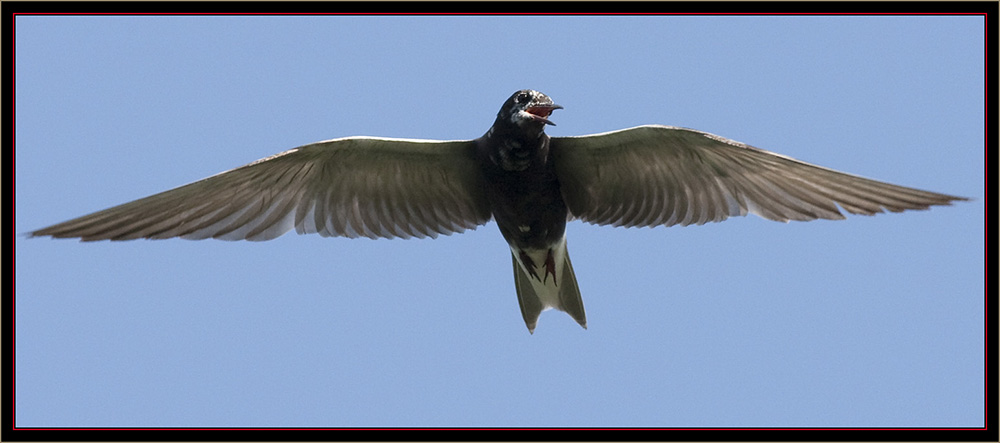
|
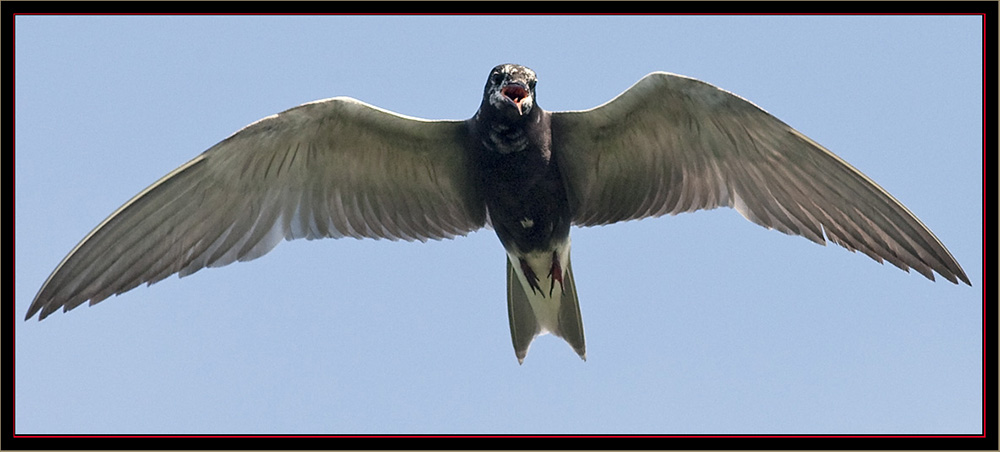
|
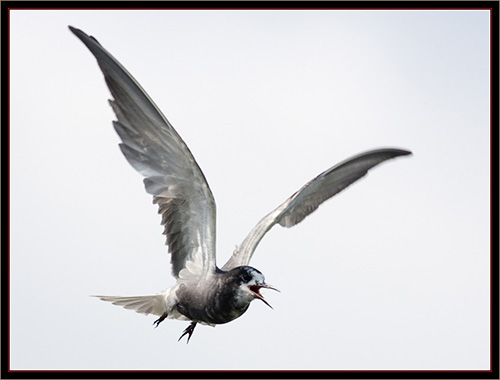
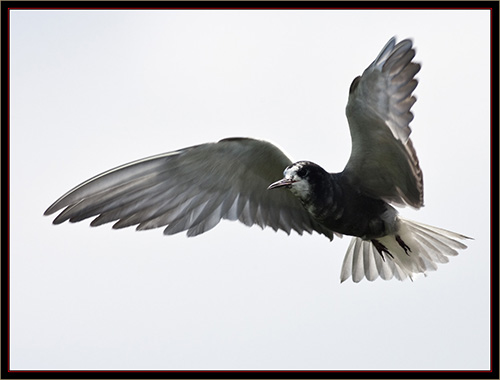
|
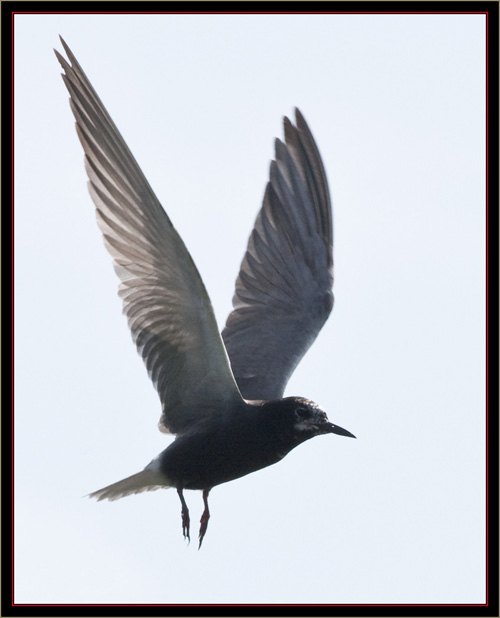
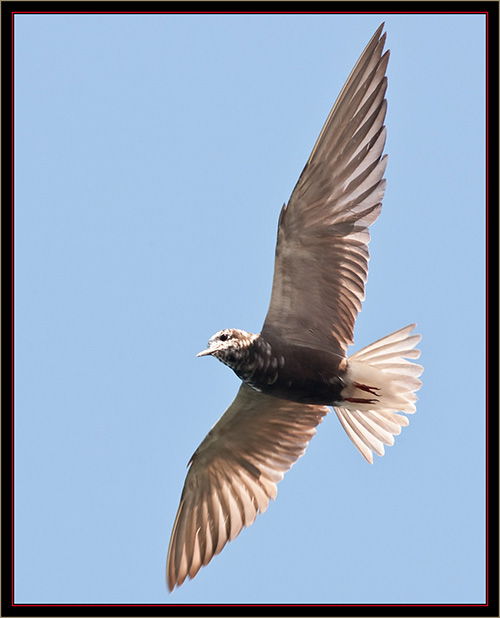
|
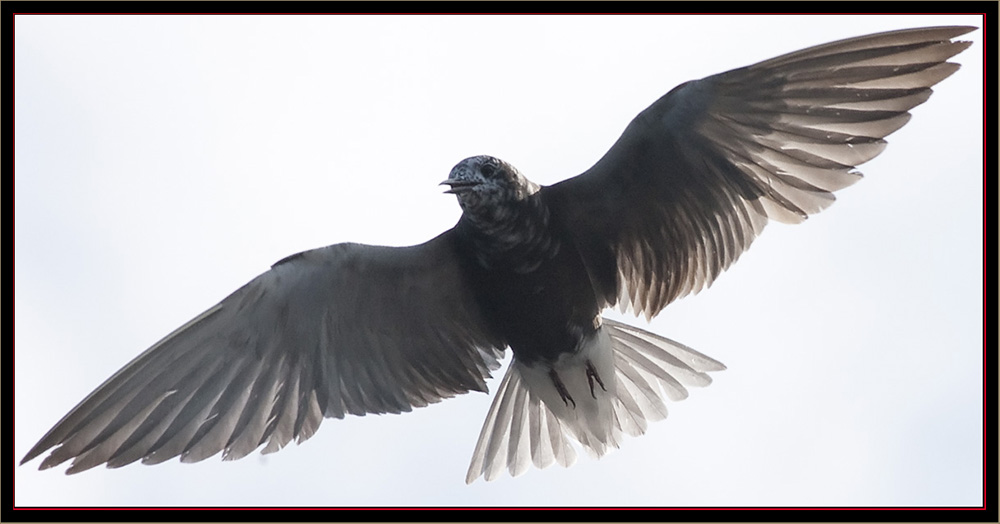
|
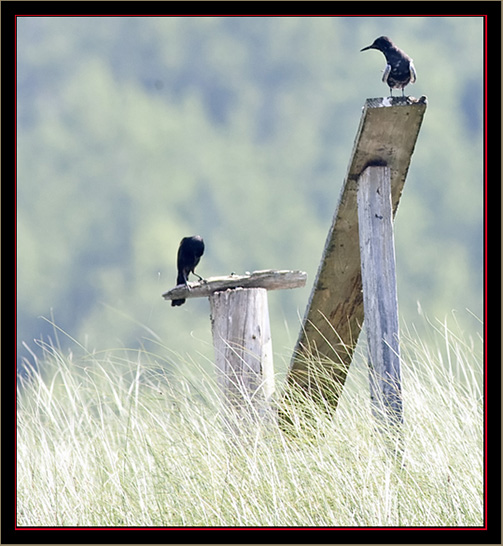

|
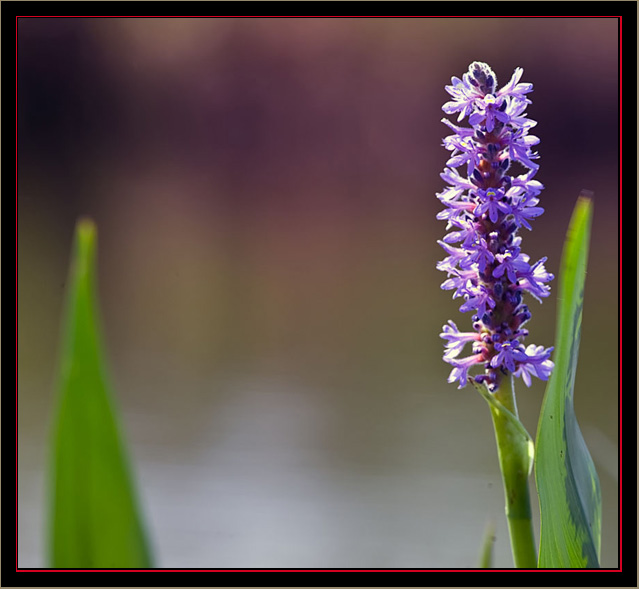
|
We started back towards the vehicles. While I photographed the area, Steve and Clare paddled – it was nice not having to drive... We continued
looking for terns and signs of Purple Loosestrife along the banks. The tern photography session was over and Steve had much to do and needed canoe
space. In other words, we needed to move out to make room for plants and bio-control beetles. We couldn’t help Steve distribute the beetles but we
could help him get the plants down to be loaded into the canoe, which we did. As Steve prepared to go back out, Clare and I photographed a
few more beetles before getting on the road.
Local Color - Carlton Pond Waterfowl Production Area Canon EOS Mark III 1Ds, 1/400 second at 400mm; EF 400mm f/5.6L at f/8, ISO 640 |
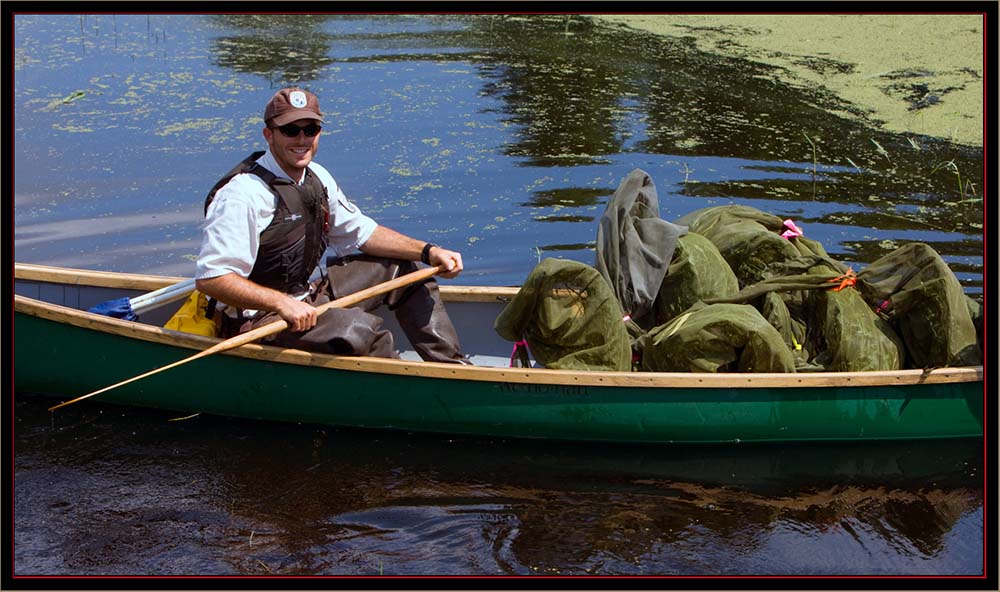
|
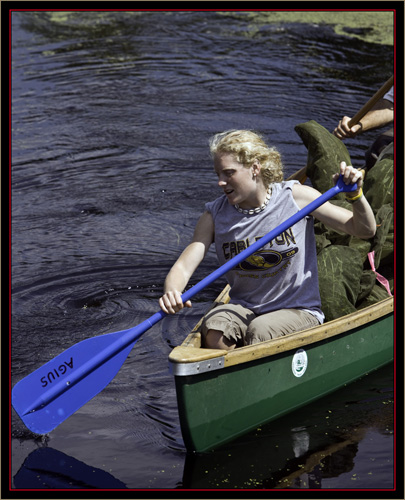
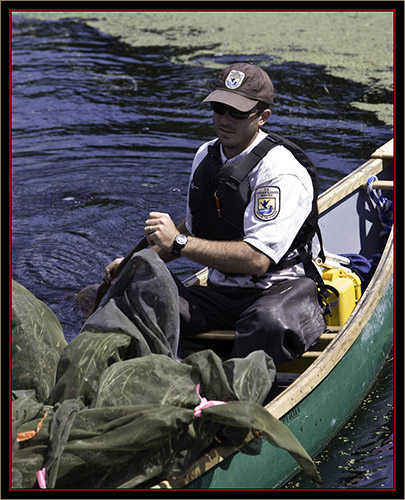
|
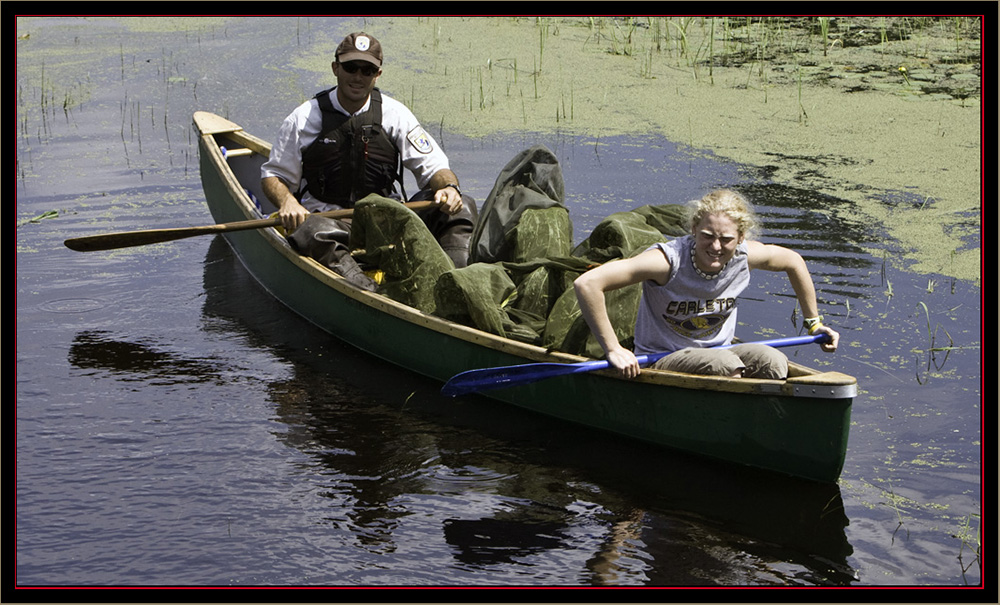
|
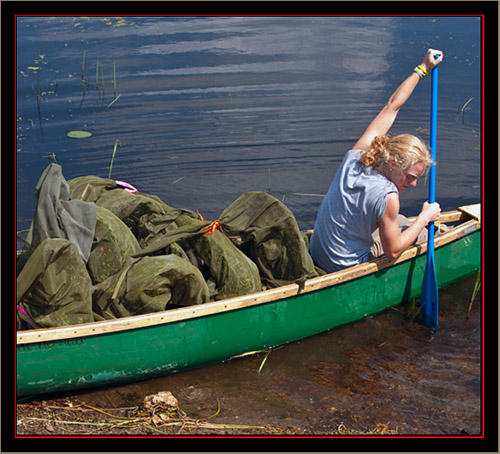
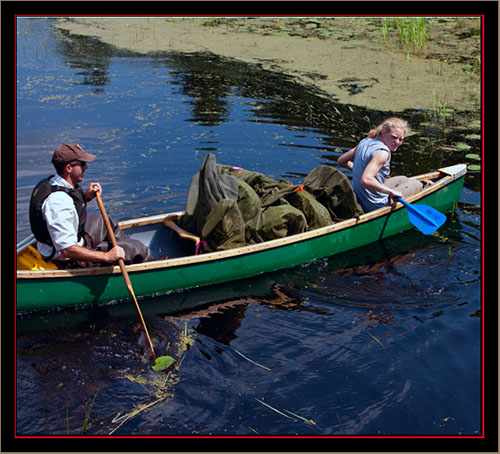
|
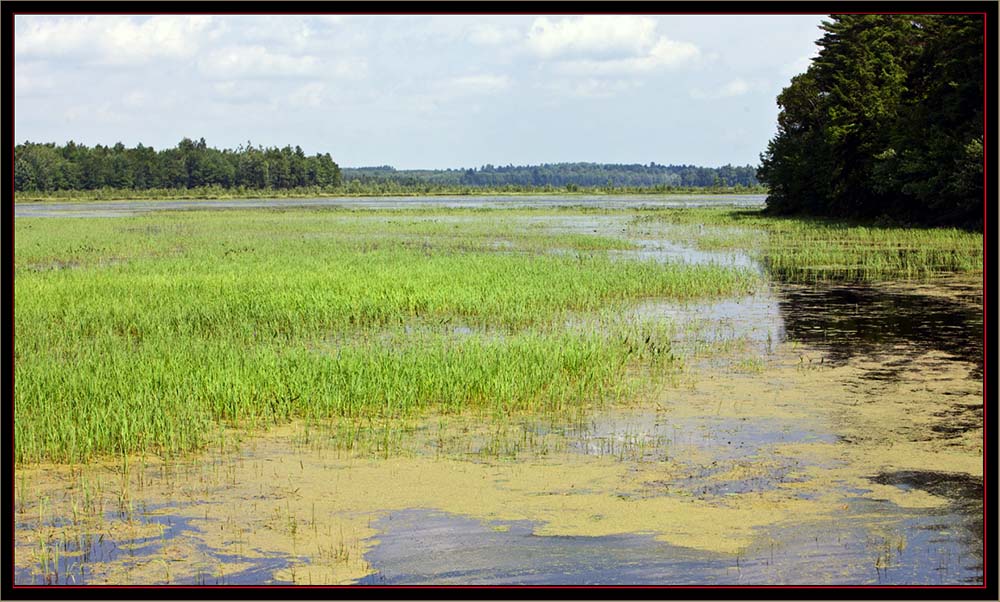
|
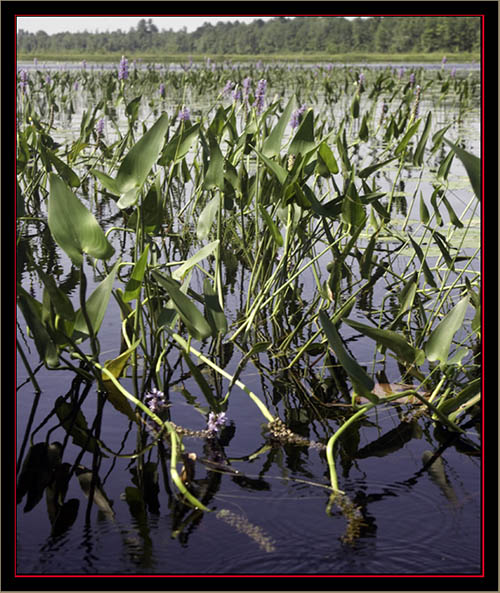
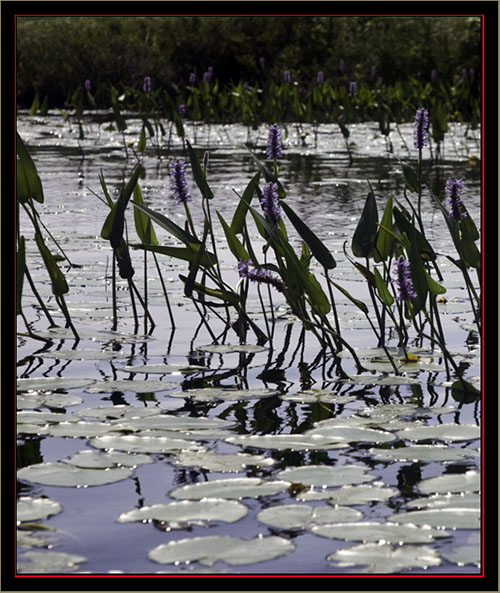
|
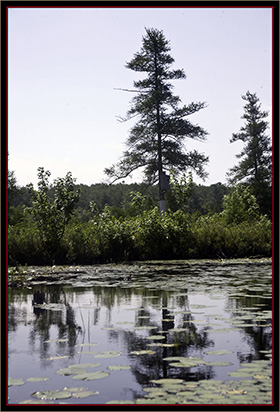
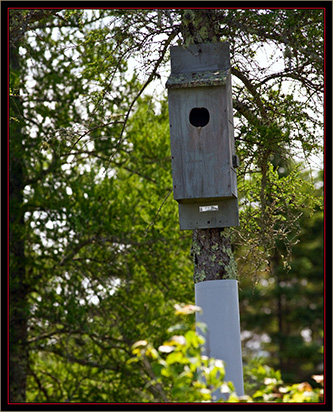
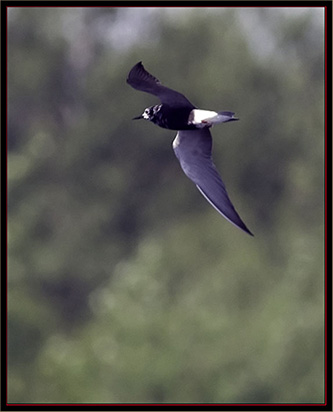
|
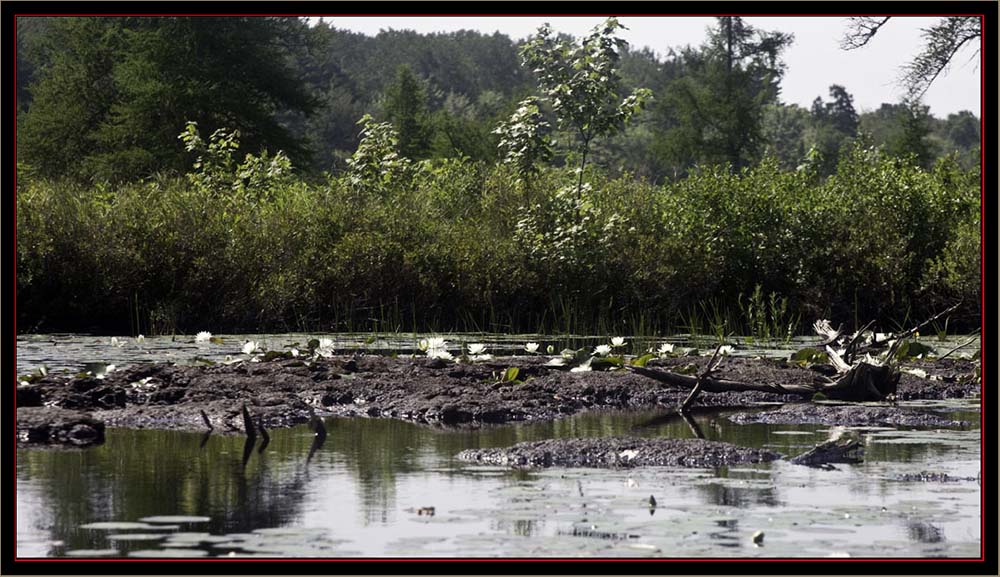
|
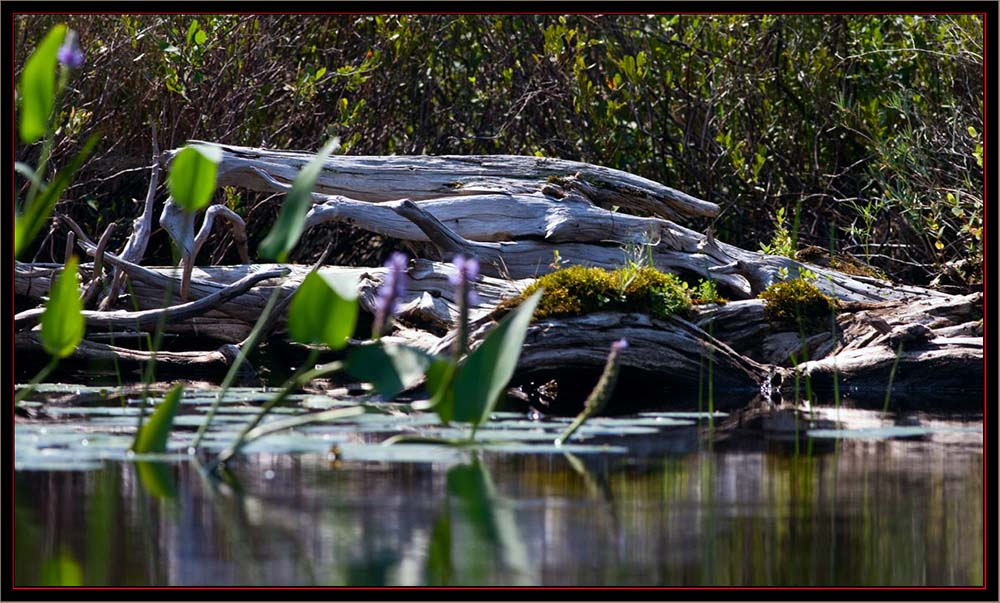
|
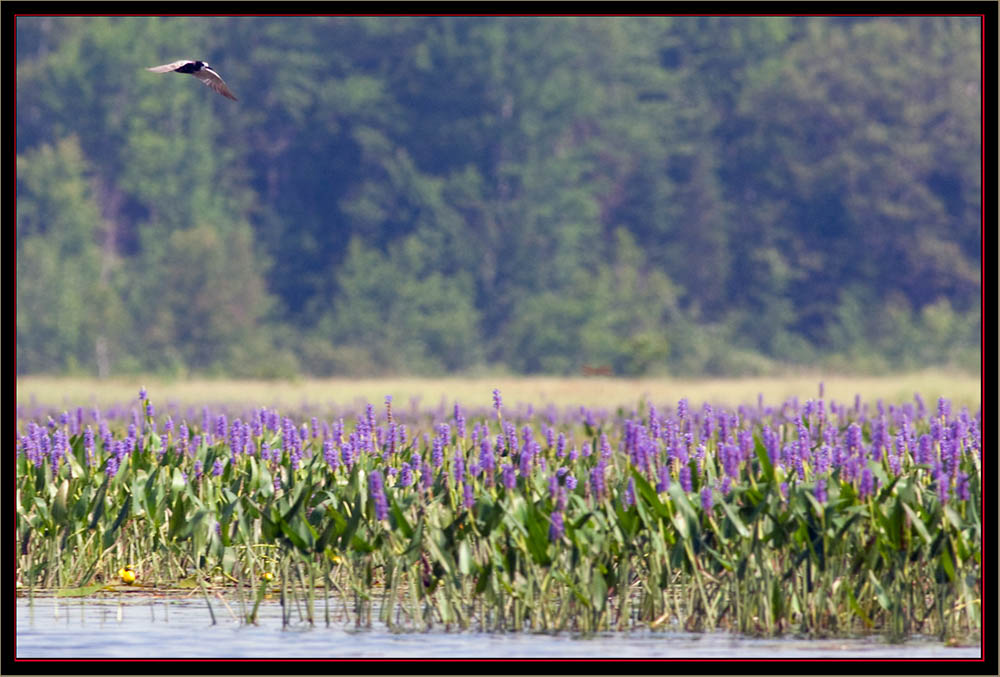
|
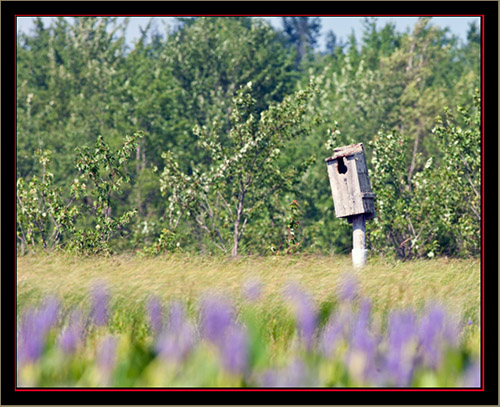
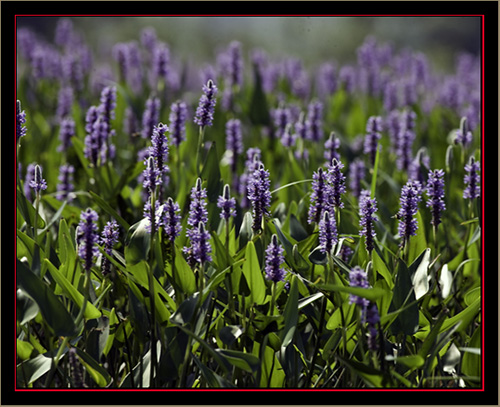
|
|
Soon enough we had the camera and personal gear packed and were ready to depart for home. As Clare and I looked out into the pond, Steve was paddling into the sunset, the canoe
laden with bio-control beetles and a smile on his face. Any day I can get out with my cameras is a good one and this session had been a success. Later, after evaluating
and enhancing the image group, some were selected, prepared and a Black Tern gallery was added to my
Bird Photography Index.
I saw Clare later in the week and learned she’d forgotten her athletic shoes at Carlton Pond. This was unfortunate. Clare is an avid runner and they would be missed. She indicated she’d be returning to the pond to pick them up soon. I don’t know if she did or not – but I did tell her that I had a photograph of the forlorn shoes, so here it is Clare – if nothing else this can serve as a fond remembrance of our day photographing Black Terns… The Forlorn Shoes... |
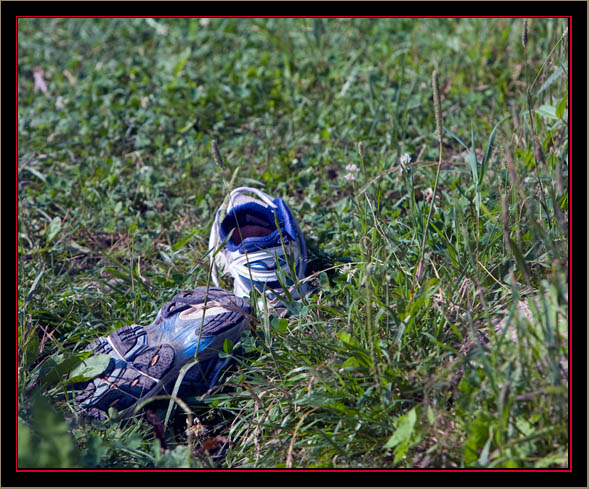
|
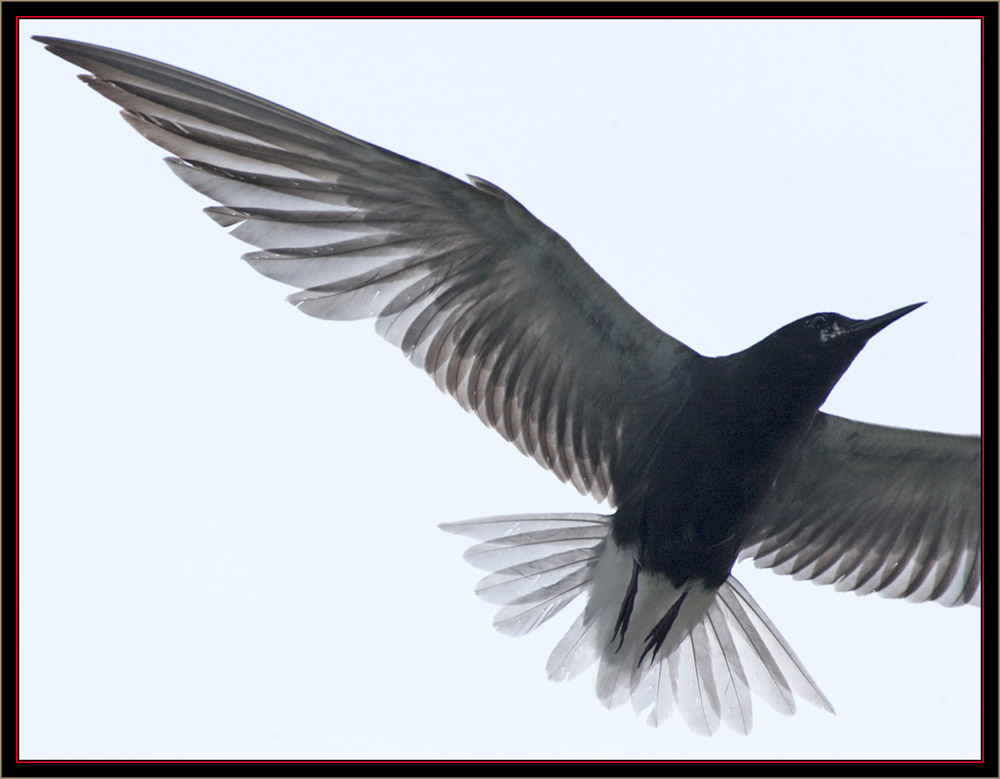
|

|